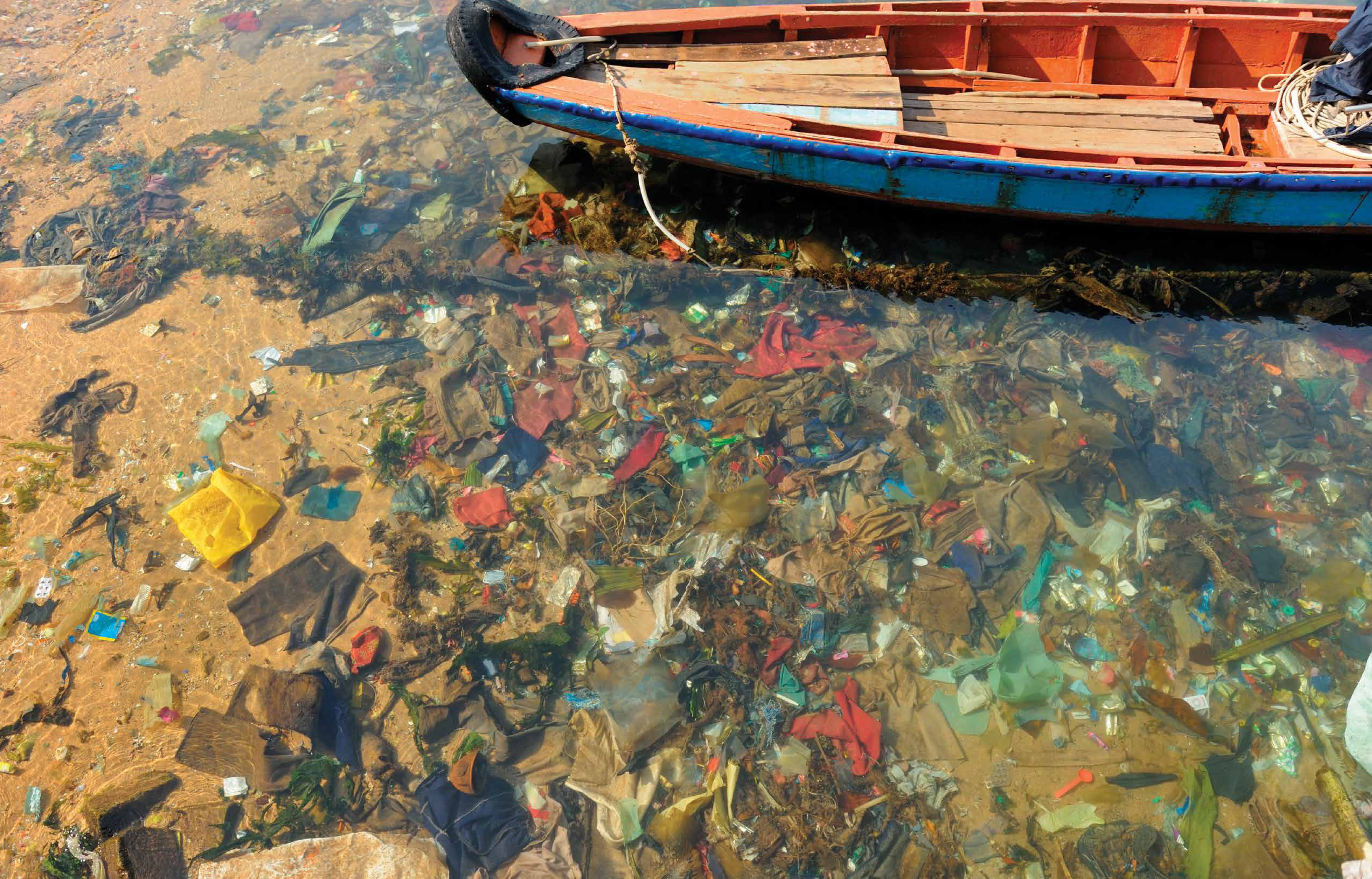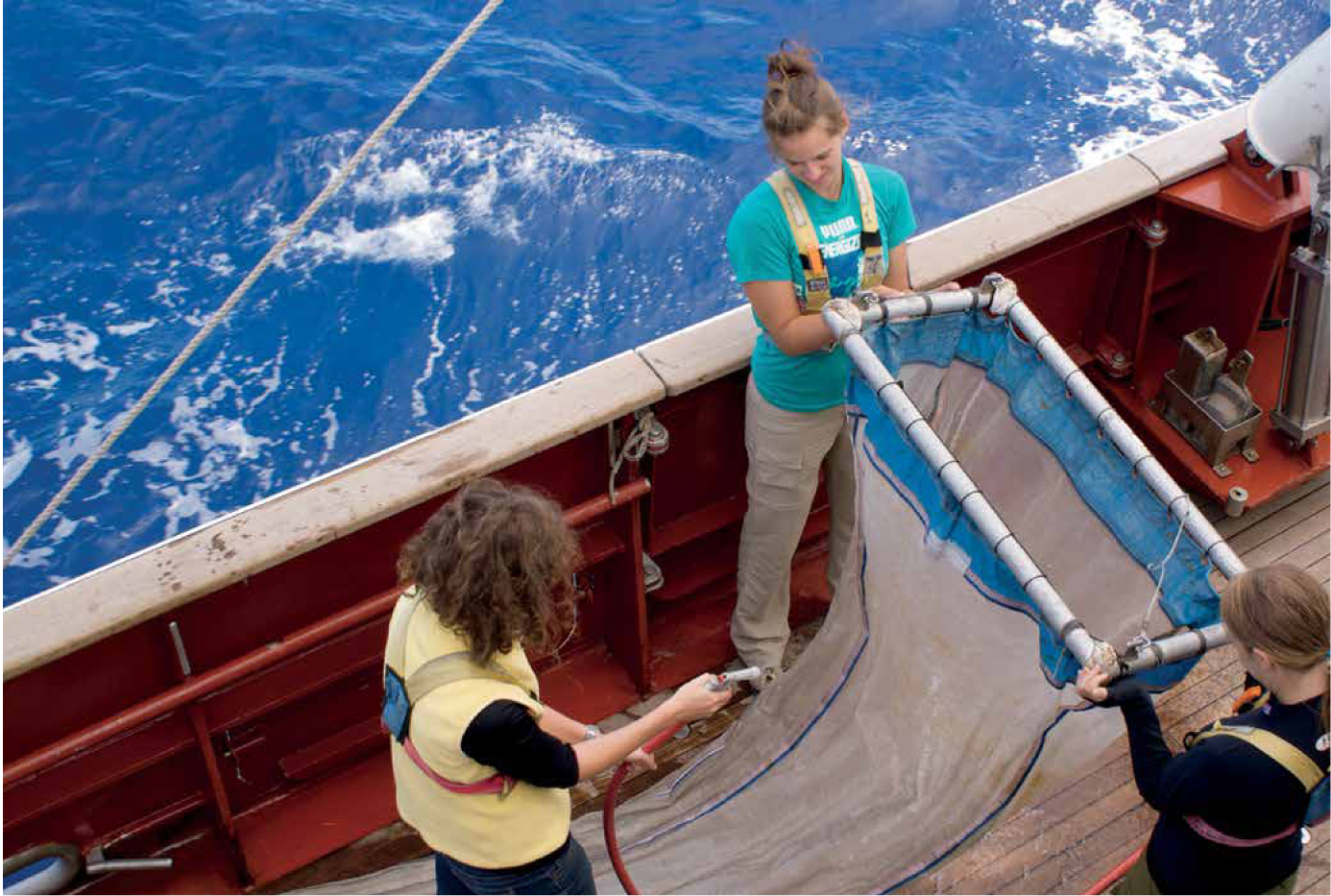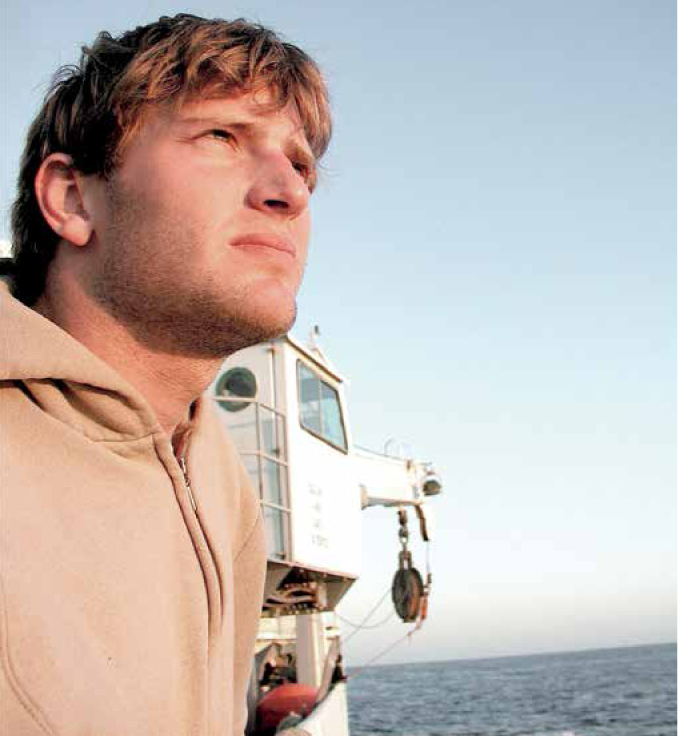| CHAPTER 17 | SOLID WASTE |
A PLASTIC SURF
17.1 Are the oceans teeming with trash?
296
297

CORE MESSAGE
We are often unaware of the waste we produce, but it profoundly affects the environment. Waste that cannot be reused or recycled simply accumulates; some of it is toxic or otherwise disruptive to living things. We can address its impact by minimizing the waste we generate in the first place, recovering and recycling waste materials, and disposing of all waste safely.
GUIDING QUESTIONS
After reading this chapter, you should be able to answer the following questions:
 What kinds of trash do humans generate, particularly in developed nations like Canada?
What kinds of trash do humans generate, particularly in developed nations like Canada? What options do we have for dealing with solid waste and what are the trade-offs for each option?
What options do we have for dealing with solid waste and what are the trade-offs for each option? What is hazardous waste and what can the average person do to reduce his or her production of it?
What is hazardous waste and what can the average person do to reduce his or her production of it? What are some of the environmental consequences of our waste production and disposal methods?
What are some of the environmental consequences of our waste production and disposal methods? How can the amount of waste produced be reduced?
How can the amount of waste produced be reduced?
298
From the deck of the tall ship SSV Corwith Cramer, the surface waters of the North Atlantic looked like smooth, dark glass. The 41-metre oceanographic Sea Education Association (SEA) research vessel had set out from Bermuda just 24 hours before on a month-long expedition aimed at tracking human garbage across the deep sea. It was a cool mid-June evening, the sun was setting, and the crew had just launched its first “neuston tow” of the trip. Giora Proskurowski, the expedition’s chief scientist, stood watching as the tangle of mesh skidded along the water’s surface, or neuston layer, keeping pace with the ship as it went. It was hard to imagine that any garbage would be found in such a flat, serene seascape.
After 30 minutes, crew members pulled the net—dripping with seagrass and stained red with jellyfish—from the water. Sure enough, when Proskurowski got closer, he could make out scores of tiny bits of plastic glistening in the mesh. The crew members counted 110 pieces, each one smaller than a pencil eraser and no heavier than a paper clip. Based on the size of the net and the area they had dragged it over, 110 pieces came out to nearly 100 000 bits of plastic per square kilometre.
Despite the water’s pristine look, the yield was hardly surprising. In the past 20 years, undergraduate students on expeditions like this one had handpicked, counted, and measured more than 64 000 pieces of plastic from some 6000 net tows. That might not sound like much, given the vastness of the Atlantic and the smallness of the plastic. But the tiny bits were gathering in very specific areas, known as gyres. Gyres are regions of the world’s oceans where strong currents circle around areas with very weak, or even no, currents. Lightweight material, like plastic, that is delivered to a gyre by ocean currents becomes trapped, and cannot escape the stronger circling currents. When scientists first evaluated all the data from the Atlantic Gyre, they discovered surprisingly dense patches of plastic—more than 100 000 pieces per square kilometre—across a surprisingly large “high-concentration zone.” The press and general public would come to know this region as the “Great Atlantic Garbage Patch,” cousin to a “Great Pacific Garbage Patch” discovered around the same time, and, they suspected, to several other patches scattered about the ocean.
Scientists knew where the plastic was coming from (seagoing vessels, open landfills, and litter-polluted gutters around the world). And they understood why it was being trapped in the gyres (wind patterns and ocean currents). But other questions remained. No one could say how big the Atlantic Patch actually was, or how all that plastic was affecting ocean ecosystems. Were the toxic substances found in plastic accumulating up the food chain, making their way into fish, bird, or mammal diets? Were all those tiny bits of solid surface providing transport for invasive species? And why wasn’t there more of it? Despite a fivefold increase in global plastic production over 22 years, the concentration of plastic in North Atlantic surface waters had remained fairly steady.
WHERE IS BERMUDA?

To answer these questions, Proskurowski, his team, and their captain would sail the Corwith Cramer all the way out to the Mid-Atlantic Ridge, an underwater mountain range that lies about 1600 kilometres farther east than any previous plastics expedition had ever gone. “That’s far enough from Bermuda that getting back will be a challenge,” he wrote on the ship’s blog as land faded from view. “The same forces that drew plastic into this particular part of the ocean—namely low and variable winds and currents—will make operating a tall ship sailing vessel tricky, to say the least.” But if all went according to plan, Proskurowski thought, he and his colleagues would be the first to reach the so-called garbage patch’s easternmost edge.
299

